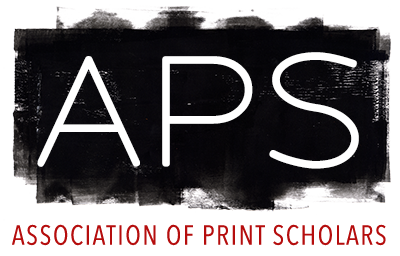APS Opportunity
Posted: 06/06/2024
Posted by: Association of Print Scholars
Expires: 07/22/2024
The Metabolism of Prints – An ecological view of printmaking and its materials
Boston,
MA, United States
Due date: 07/22/2024
APS-sponsored Session Proposal, RSA 2025
Organized by by Dr. Ulrike Keuper (Ludwig-Maximilians-University, Munich) and Jun.-Prof. Dr. Hui Luan Tran (Johannes Gutenberg-Universität, Mainz)
Every artwork is subject to decay and is therefore involved in a metabolic process. Due to
the printing process printmaking also bears the natural decay of the plate or the
woodblock and each printed sheet. This can be seen as a characteristic of this technique,
just as the division of labour: Pre-drawing, transferring, cutting/engraving/etching and
printing are steps in a working process executed by one or more actors. In material terms,
this means that metal was mined, paper was produced using water, black pigments and
solvents should not be forgotten and in the case of etching, acid came into play. From
the perspective of environmental history, resources were processed whose availability was
unstable and potentially exhaustible and waste materials were generated which were
harmful to the environment. One step further in the production process, the question of
reuse or recycling arises. Was there an afterlife of plates and woodblocks? Were they
reused? How was paper recycled and how did printed sheets find new purposes in
different contexts? And was there an ecological consciousness or urge for sustainability?
The ecological footprint of early modern printmaking is out of proportion to today's
climate crisis. Nevertheless, the situation demands our responsibility as scholars of a
historical discipline. Indeed, printmaking as a medium of reproduction can be seen as a
proto-industrial technique and a medium of capitalism. Besides an ecocritical view of
printmaking, the session hopes to provide a deeper insight to the technique by
questioning its materials, their circumstances of extraction and utilisation.
Please send your full name, current affiliation, paper title (15-word maximum), abstract (200-word maximum), PhD completion date (past or expected), keywords, and a 1-page non-narrative curriculum vitae to the organizers: Ulrike Keuper (Ulrike.keuper@kunstgeschichte.uni-muenchen.de) and Hui Luan Tran (hl.tran@uni-mainz.de).
Organized by by Dr. Ulrike Keuper (Ludwig-Maximilians-University, Munich) and Jun.-Prof. Dr. Hui Luan Tran (Johannes Gutenberg-Universität, Mainz)
Every artwork is subject to decay and is therefore involved in a metabolic process. Due to
the printing process printmaking also bears the natural decay of the plate or the
woodblock and each printed sheet. This can be seen as a characteristic of this technique,
just as the division of labour: Pre-drawing, transferring, cutting/engraving/etching and
printing are steps in a working process executed by one or more actors. In material terms,
this means that metal was mined, paper was produced using water, black pigments and
solvents should not be forgotten and in the case of etching, acid came into play. From
the perspective of environmental history, resources were processed whose availability was
unstable and potentially exhaustible and waste materials were generated which were
harmful to the environment. One step further in the production process, the question of
reuse or recycling arises. Was there an afterlife of plates and woodblocks? Were they
reused? How was paper recycled and how did printed sheets find new purposes in
different contexts? And was there an ecological consciousness or urge for sustainability?
The ecological footprint of early modern printmaking is out of proportion to today's
climate crisis. Nevertheless, the situation demands our responsibility as scholars of a
historical discipline. Indeed, printmaking as a medium of reproduction can be seen as a
proto-industrial technique and a medium of capitalism. Besides an ecocritical view of
printmaking, the session hopes to provide a deeper insight to the technique by
questioning its materials, their circumstances of extraction and utilisation.
Please send your full name, current affiliation, paper title (15-word maximum), abstract (200-word maximum), PhD completion date (past or expected), keywords, and a 1-page non-narrative curriculum vitae to the organizers: Ulrike Keuper (Ulrike.keuper@kunstgeschichte.uni-muenchen.de) and Hui Luan Tran (hl.tran@uni-mainz.de).
